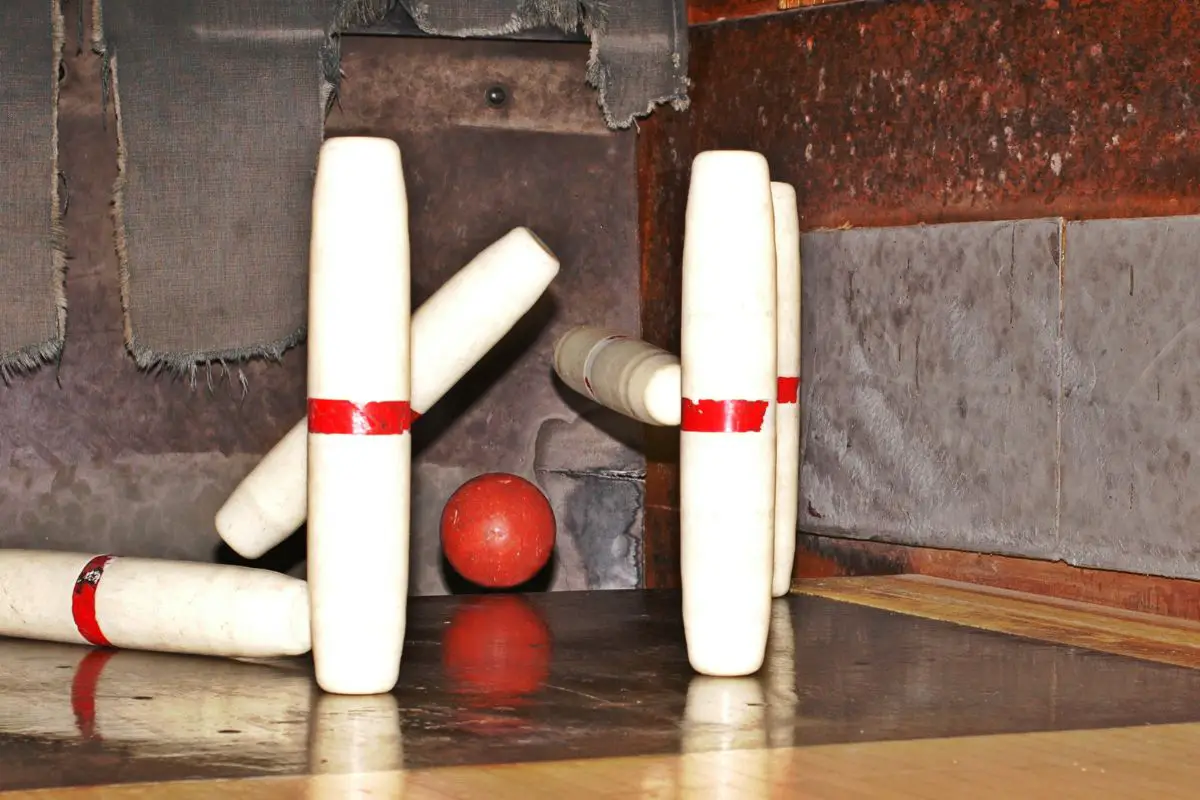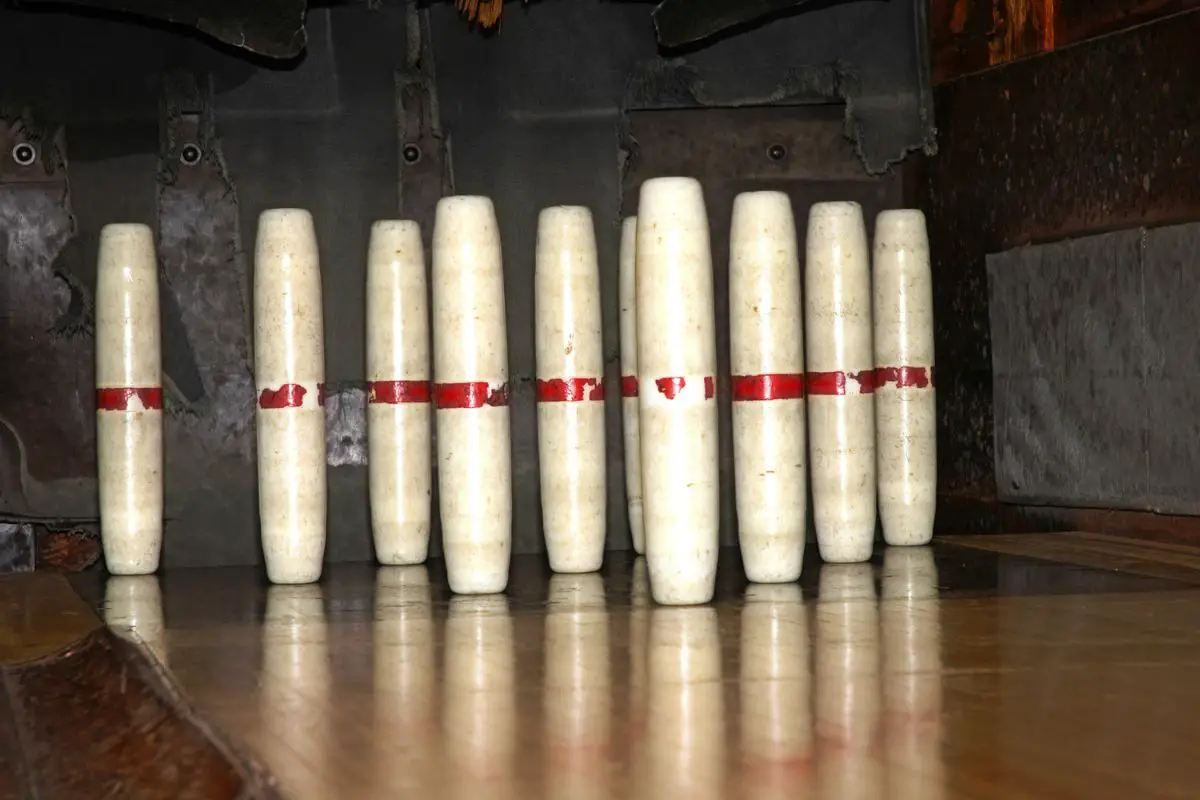If you thought bowling was restricted to the ten-pin version then you would be wrong.
There are other versions of bowling and one of them is pretty exclusive to New England, but also the Canadian Maritime Provinces.

Candlepin bowling dates back to 1880 yet is still played to this day. It may even prove an interesting alternative to ten-pin bowling if you can get to a lane.
In this guide, we will look at the origin of candlepin bowling and where this version of bowling is played.
We will also look at the rules of candlepin bowling, the differences between ten-pin and candlepin bowling, as well as how the pins were developed in candlepin bowling.
The Origin Of Candlepin Bowling
According to the International Candlepin Bowling Association, the game of candlepin bowling originated in Worcester, Massachusetts.
This is where the first game was played back in 1880 when it was known to be developed by the owner of a bowling and billiards hall, Justin White.
While White may have developed the game, it was allegedly formally invented by John J. Monsey, also in the city of Worcester.
Monsey also played billiards and his known association with candlepin bowling was to standardize the game itself.
In 1906, Monsey was known to have created the National Duckpin and Candlepin Congress which became responsible for regulating such features as the shape and size of the pins, the ball size, and how the lane surfaces were characterized.
The organization also facilitated the development and formation of leagues with other competitions too.
Where Candlepin Bowling Is Played
If the game of candlepin bowling is new to you, that is perhaps because you have not been in the specific areas where it is played.
The game is specific to the state of New England as well as the Canadian Maritime Provinces. Anywhere else and you are unlikely to see it played or heard of it.
The Rules Of Candlepin Bowling
Just like any bowling game, candlepin bowling does not need an instruction manual to understand.
A ball is rolled down a lane to knock over ten pins that form a pyramid. Three rolls complete each turn though the pins remain down between rolls.
You still get a strike for knocking down all ten pins though that does seem harder with them remaining knocked over on the lane.
Ten points are awarded for a strike which is then added to the count for the subsequent two rolls.
A spare still occurs should the ten pins be knocked down after two balls though if it takes three rolls to knock them all down then the score is simply ten, or a ten-box as it is called in New England.
The Differences Between Ten-Pin And Candlepin Bowling

Before we get onto the differences, there is one straightforward similarity between ten-pin and candlepin bowling.
Both versions of bowling involve balls being rolled down a lane to knock over as many pins as possible.
With that out of the way, there are several differences between the two versions of bowling that should be addressed.
Candlepin bowling may seem more archaic than ten-pin bowling and rightly so.
For one, the pinsetter is triggered with a reset button instead of automatically as you may expect after each frame. That’s right, it is a manual process involving someone pushing a button.
Unlike ten-pin bowling, the fallen pins remain on the frame between rolls making it arguably more difficult to score points as you have to get past the ‘dead wood’ of those fallen pins.
Being thinner pins than those in ten-pin bowling, you can expect to have a harder time of knocking them down.
The balls used to knock down the pins in candlepin bowling also lack finger holes, weigh less, and are comparably smaller.
However, you do get an extra go in candlepin bowling with three balls per frame instead of the two you would expect in ten-pin bowling.
How The Pins Developed
From the outset, the pins were dowels (cylindrical rods) that were each an inch thick. These looked like candles, hence where the name candlepins originated from.
There was some argument over the thickness as a newspaper article that came out in 1888 suggested that the pins were two inches thick.
The candlepin has since grown in thickness to the exact measurement of 2 15/16 inches which is 74.6 mm thick.
Another change occurred in the late 1960s when the wooden candlepins were replaced with plastic ones which may have resulted in many players altering their strategy.
Frequently Asked Questions
What Is The Highest Known Sanctioned Score In Candlepin Bowling?
That would be the score of 245 which has reportedly been achieved twice, at least officially.
This was first done in 1984 by Ralph Semb in Erving, Massachusetts. The second player to do it was Chris Sargent on 13th May 2011 in Haverhill, Massachusetts.
Is Duckpin Bowling Similar To Candlepin Bowling?
There are some similarities between duckpin bowling and candlepin bowling.
Both bowling games are seemingly limited to certain states, for duckpin bowling these states are mainly Maryland, Rhode Island, and Connecticut.
However, for candlepin bowling, the game is restricted to New England and the Canadian Maritime Provinces.
In both bowling games, each player is given three rolls of the ball and the ball does not include any finger holes.
Final Thoughts
For a different version of bowling, candlepin bowling should be easy to pick up. There are still ten pins and if you knock them all over with the first roll then that’s called a strike.
How the game is played may be surprising as the fallen pins remain on the lane, and a foul can be awarded if a gutter ball strikes one.
The shape of the pins may also prove a deciding factor in how much this version of bowling is enjoyed, or not, depending on how much a player values scoring points.
- A Comprehensive Guide to the Top Bowling Movies of All Time - December 23, 2023
- Bowling Shoes Selection Guide: How to Choose the Right Fit - September 27, 2023
- Bowling Ball Buying Guide: How to Choose the Right Ball for You - September 23, 2023
